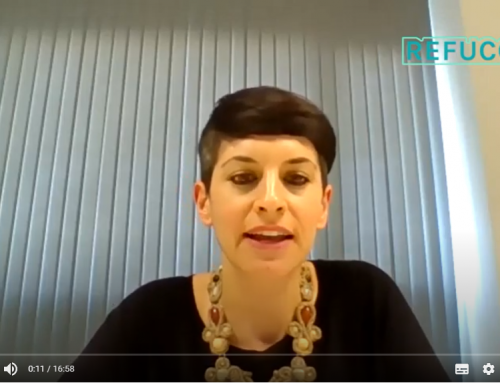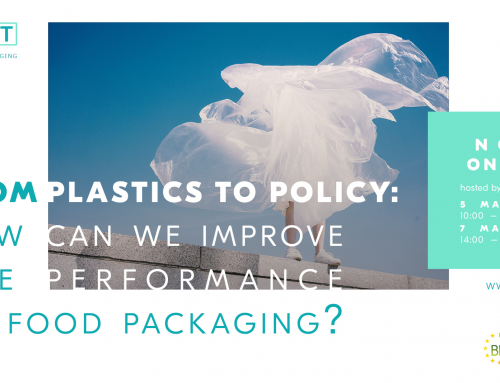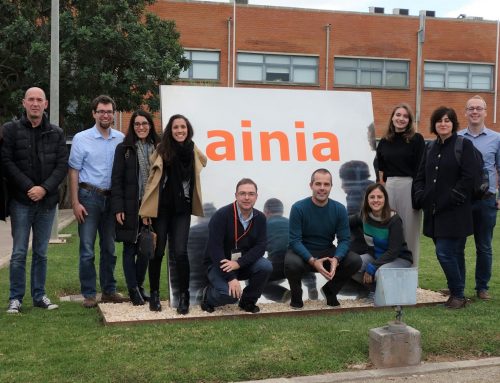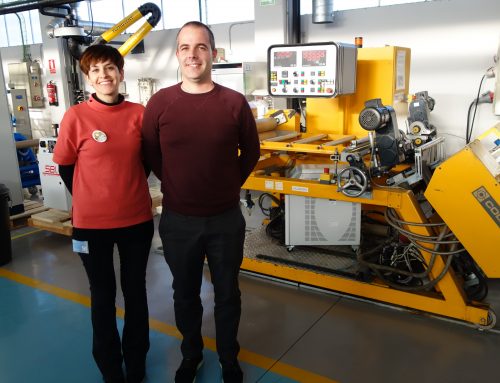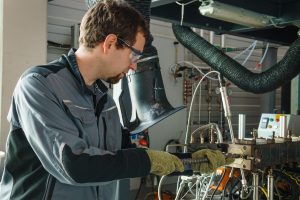
Simon Kemmerling and Sebastian Reinhardt work at Fraunhofer ICT in two different departments: Polymer Engineering and Environmental Sciences, respectively. Simon’s department is working in the field of reactive extrusion (REX), while Sebastian’s aims to solve environmental challenges to enable future sustainable technologies. Due to good synergies, the two departments teamed up and have been involved in REFUCOAT since its beginning in 2017. Today we talked to them about the project and their research.
Could you tell us a little bit about REFUCOAT and your role in the project?
Food packaging has until this day mostly been made of fossil-based materials that build up on land or in the sea. The idea behind REFUCOAT is to produce a recyclable food packaging from renewable (bio-based) sources. With the help of our project partners here at Fraunhofer and AIMPLAS we produce the barrier coating of the packaging, made of the polymer PGA (Poly-Glycolic Acid). PGA has naturally good barrier properties and is biodegradable. The layer of PGA is applied to the foundation layer to enhance the barrier properties that are important to keep the packaged food’s quality over time. The layer will, for example, prevent water from entering a package of crisps (would make them soggy) or from getting out of a package of fresh chicken (would dry out the meat). During the project, we have developed a new process to produce PGA. We receive a plant-based monomer (GA, Glycolic Acid) produced by Thuenen Institute, and our role is to polymerise it and obtain PGA.
Is the product biodegradable? If it ends up in the sea, will it biodegrade?
The PGA coating is fully biodegradable and will biodegrade within a relatively short timeframe. If PGA ends up in the sea, it will first decompose into the monomer GA and then break down into natural components. But, to be technical, also conventional plastics are biodegradable, but they degrade over hundreds or even thousands of years, while PGA will do so over a few months or years. So, this is also a question of definition. Whether the whole REFUCOAT packaging will be biodegradable depends on the final mix with other layers produced in other parts of the project, and this is yet to be determined.
What are the biggest challenges you face in developing the PGA coating?
We have had a few challenges in the PGA polymerization process. In the beginning, we had some problems with a low purity of the polymer, which lead to a slightly yellow, unwanted colouring. The biggest challenge we are facing now is in the application of the PGA coating onto the foundation layer, which has shown to be a bit tricky. We were originally planning to use a solvent, but this has shown to be difficult for several reasons. We are therefore currently trying other methods.
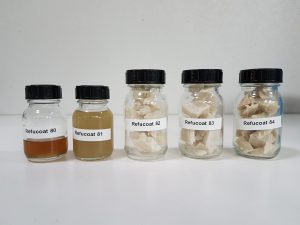
Do you get support or resistance from the industry?
At the moment, we get neither. However, from talking to different stakeholders and industry, our impression is that they know that the shift from fossil-based to bio-based materials must happen, and they are interested in hearing more about our project and findings.
REFUCOAT is in a researching phase. Will you eventually try to scale up the product? What does the route to market look like?
Yes, we have now obtained 20-30 kg of PGA, which would classify as more than academic research, but it’s still far from an industrial scale. At this point, we are able to produce 1 kg/h, while for an industrial scale it would need to be 100s kg/h. We first need to establish and stabilise the process and obtain good results before it can be scaled up.
What does your typical working day look like, working on REFUCOAT?
This depends on the day but it is never monotonous. We are often in the lab doing experiments such as reactive extrusion (binding together monomers to form polymers) and analysing these results. Other days we prepare or attend meetings or do other kinds of dissemination work. We are around 10 people from Fraunhofer working together on the project, all with different roles.
What other types of projects do you work on, and are they all related to food packaging?
We work on many other projects related to environmental issues and polymer topics, not only food packaging. This includes for example the removal of legacy additives from polymers, the recycling of polymers, and producing biobased polymer blends. Furthermore, our research is involved in cutting edge technologies in the automotive and aerospace sectors.

